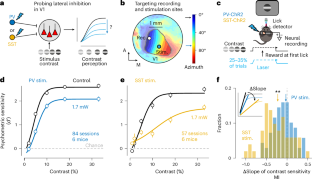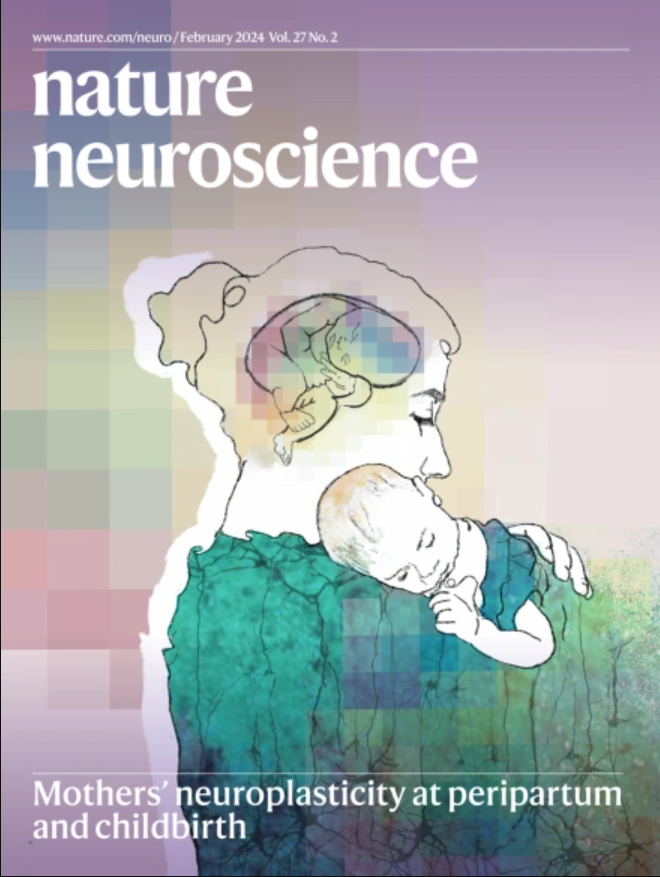Lateral inhibition in V1 controls neural and perceptual contrast sensitivity
IF 21.2
1区 医学
Q1 NEUROSCIENCES
引用次数: 0
Abstract
Lateral inhibition is a central principle in sensory system function. It is thought to operate by the activation of inhibitory neurons that restrict the spatial spread of sensory excitation. However, the neurons, computations and mechanisms underlying cortical lateral inhibition remain debated, and its importance for perception remains unknown. Here we show that lateral inhibition from parvalbumin neurons in mouse primary visual cortex reduced neural and perceptual sensitivity to visual contrast in a uniform subtractive manner, whereas lateral inhibition from somatostatin neurons more effectively changed the slope (or gain) of neural and perceptual contrast sensitivity. A neural circuit model, anatomical tracing and direct subthreshold measurements indicated that the larger spatial footprint for somatostatin versus parvalbumin synaptic inhibition explains this difference. Together, these results define cell-type-specific computational roles for lateral inhibition in primary visual cortex, and establish their unique consequences on sensitivity to contrast, a fundamental aspect of the visual world. The role of lateral inhibition for perception and neural computation remains unsolved. Del Rosario et al. show that distinct types of cortical interneurons in V1 drive lateral inhibition that causes subtraction or division of visual sensitivity.


求助全文
约1分钟内获得全文
求助全文
来源期刊

Nature neuroscience
医学-神经科学
CiteScore
38.60
自引率
1.20%
发文量
212
审稿时长
1 months
期刊介绍:
Nature Neuroscience, a multidisciplinary journal, publishes papers of the utmost quality and significance across all realms of neuroscience. The editors welcome contributions spanning molecular, cellular, systems, and cognitive neuroscience, along with psychophysics, computational modeling, and nervous system disorders. While no area is off-limits, studies offering fundamental insights into nervous system function receive priority.
The journal offers high visibility to both readers and authors, fostering interdisciplinary communication and accessibility to a broad audience. It maintains high standards of copy editing and production, rigorous peer review, rapid publication, and operates independently from academic societies and other vested interests.
In addition to primary research, Nature Neuroscience features news and views, reviews, editorials, commentaries, perspectives, book reviews, and correspondence, aiming to serve as the voice of the global neuroscience community.
 求助内容:
求助内容: 应助结果提醒方式:
应助结果提醒方式:


